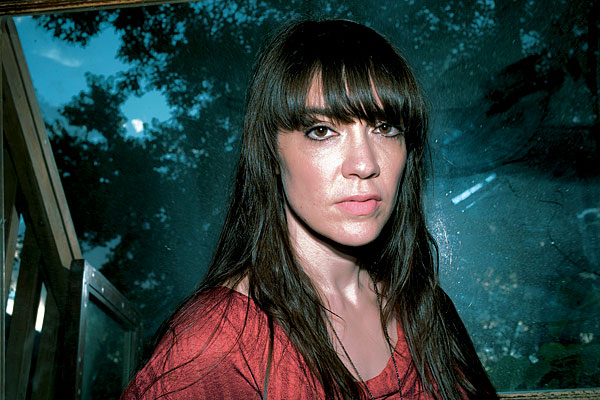
As a former member of experimental noise-rock troupes the Scissor Girls and Bride of No-No, Chicago-based musician AZITA (full name Azita Youssefi) is no stranger to over-the-top performances. Yet after dabbling in a Redmoon Theatre production and writing song material for local playwright Brian Torrey Scott, her new album Year (out today) finds AZITA in a persuasive solo act. The singer-songwriter spoke with Chicago about her new material, teaching at the Old Town School of Folk Music, and experiencing the Iranian Revolution.
Your previous bands, Scissor Girls and the Bride of No-No, were much heavier and over the top. The new material on Year seems more introspective. Why the change?
In both of those bands, the songwriting was a collaboration. I was having a difficult time working that way, so I tried to write by myself. At the time my roommate had just brought a piano into the loft we were living in, and I found myself influenced by classical music, so I ended up with these [more piano-based] songs. I might want to do something noisier again. If I exhaust something I’m working on, and I think it has nothing else to offer me, I’m going to look somewhere else.
Your new album was originally written to accompany a theatre piece. How did that transpire?
I worked with the Brian Torrey Scott to write songs for a play he had created of the same name, Year. It was performed in 2006 at the Prop Theatre as part of their yearly Rhinoceros Festival. I actually played and sang the songs in the production. Since then, the music and its arrangements have changed, from touring and having time to flesh them out more for the album.
You also were a part of a Redmoon Theatre production, right?
Yes, I was the lead in a show called Last of My Species II: The Perilous Songs of Bibi Merdad, that Redmoon put together over Labor Day weekend in 2010. It was a story about a pop star from the Middle East and was very elaborate. It took about 100 people to pull it off.
What is it about the intersection of music and theatre you find compelling?
I don’t think it is compelling to me; it’s more of the opportunities presented. I think the team at Redmoon was probably thinking of my past work and wanted to have an aspect of it in the show. In terms of music, I haven’t done anything theatrical with costumes or anything like that for years, not since The Bride of No-No broke up. Since I started releasing my solo work through Drag City Records, I’ve had only a desire to work in the form of pop music and seeing what is possible just through music and songs. With Bryan’s play, it was a story kind of theatre, which is what interested me. The story was about a group of people grappling with the death of one of their friends; so even then I’ve made the songs more playful on my album then they were.
In fact your first entry into the arts was visual, as a student at the School of the Art Institute of Chicago. When did you home in on music as your outlet?
I was there originally to learn visual art. I never stopped drawing, but toward the end I also started working within the sound department. At the same time, Scissor Girls were active and touring. At some point, I felt I didn’t have the concentration to be sitting at home making visual work in an isolated way. Even having an exhibit and putting my work up on the wall and walking away from it was not appealing—it was scary to commit myself to living that way. Through performing, there was a lot of interaction as an artist. You actually get to deliver what you’re working on to a person, in person, and none of that happens for visual artists. Being a painter, to me, requires loneliness.
So now you’re not only making music but teaching it at the Old Town School of Folk Music. Is the future of music in good hands with your students?
I have about 40 students. Some are very little kids who want to learn piano, so that is just an exercise in patience. I have a few students that are exceptional and a lot of kids that are doing music as one of seven things they do every week.
Your childhood was actually very different from that, having grown up during the Iranian Revolution of 1978. Did that set the stage for your art?
I have a vague sense of things that were happening during that time, but I don’t think kids in general have the same reaction as adults do to impending chaos. We left pretty early on, yet the real experience from that time that has probably informed everything I do is all of a sudden being in a new country where I was an outsider and treated badly because of something I didn’t understand. I was trying to figure out how to navigate the new culture I was in, alone, because my parents didn’t know it either. People don’t realize how much more things are interconnected now thanks to the Internet. Back then, it was pretty difficult being an immigrant. Although the strength was in being able to figure out everything myself.
AZITA will perform at a record release party on Dec. 6 at the Hideout (1354 W. Wabansia Ave.). Pick up tickets to the show here.
Selena Fragassi is a contributing music critic for Chicago.
Photograph: Marzena Abrahamik


